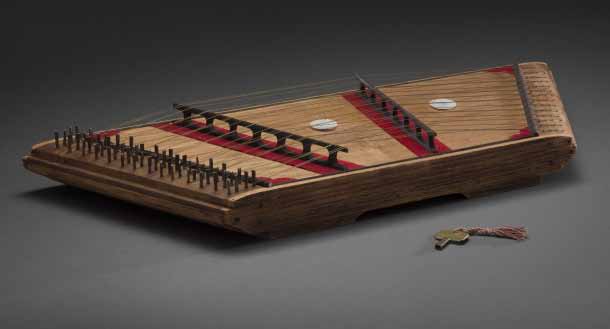In 1893, 10 Joseon-era musicians of Joseon (1392-1910) traveled to Chicago on a special mission.
King Gojong (1863-1907), aware of the country’s declining prospects due to foreign pressures, sent a group of musicians and craftsmen to join the Chicago World’s Columbian Exposition 1893 to promote Joseon as a dignified independent country.At the global event, in which 47 countries participated, traditional housing, women’s accessories, attire and chinaware from Joseon were showcased. The musicians
Today, 120 years later, people in Korea, where authentic traditional instruments are scarce due to historical upheavals including Japanese colonial rule (1910-1945), the Korean War (1950-1953) and rapid industrialization, can now see the instruments and appreciate traditional Joseon music. The eight instruments, geomungo (six-stringed Korean zither), dangbipa (Tang mandolin), yanggeum (zither), two piri (Korean flute), daegeum (Korean large fife), saenghwang (sheng) and janggu (hourglass-shaped drum) arrived at Incheon International Airport on Wednesday, Sept. 25, with a grand welcoming ceremony. After a thorough inspection, they were moved to the National Museum in central Seoul for the exhibition, “Return after 120 years: Joseon instrument in U.S.,” which is scheduled from Oct. 1 through Dec. 1 at the special exhibition hall.
The exhibition is composed of three sections -one focusing on the Joseon pavilion at the expo; another introducing the 10 instruments; and a display of the actual musical instruments, music scores, and other items. The event will highlight the dangbipa and its reed, which are said to be the oldest existing pieces of their kind. Paintings by famous artists Hong-do Kim (1745-1806) and Yun-bok Shin (1758-?) depicting concerts as well as other artworks of royal ceremonies with music will also be shown.
The exhibition was made possible when a group of Korean traditional music experts visited the Peabody Essex Museum earlier this year. “We saw the tightening thread of janggu, carved in the shape of a dragon. It was the most beautiful thing that I had ever seen,” Ju said.
“Most of the instruments were in fine condition and especially the flute is the only complete one left from that era, which has great academic and historical value,” he added.
The exhibition is closed on Mondays. For more information call Int’l : (82-02) 580-3322. |




